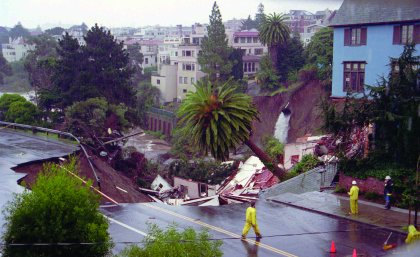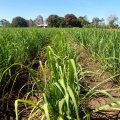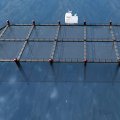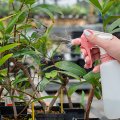-1.jpg?itok=mkVc6lrG)
High res and low res raw footage, a short explanatory video and contents list available here.
UQ TV News episode available here and an infographic on the research is here.
A team of University of Queensland researchers has found a way to save water providers hundreds of millions of dollars a year by reducing sewer corrosion.
Team leader and Deputy Director of UQ’s Advanced Water Management Centre (AWMC) Professor Zhiguo Yuan said sewer systems were recognised as one of the most critical infrastructure assets for urban societies.
“Maintenance costs for these concrete sewers run into the billions of dollars a year across the world,’’ Professor Yuan said.
In a paper published in the leading international journal Science, the research team shows that a common coagulant added in the drinking water treatment, aluminium sulfate, can be a key contributor to the sulfate levels in sewage.
“This, in turn, is the primary source of hydrogen sulfide, which creates rapid concrete degradation and is the main cause of global sewer corrosion,” he said.
“This could be avoided by switching to sulfate-free coagulants at little or no extra cost compared with the large potential savings in sewer maintenance and corrosion costs.
“To get to this point, we performed a two-year sampling campaign in South East Queensland, an extensive industry survey across Australia, a global literature review, and a comprehensive model-based scenario analysis of the various sources of sulfate.”
Coagulants are added in the drinking water treatment process to remove turbidity from the water.
UQ Vice-Chancellor and President Professor Peter Høj said the publishing of the team’s paper in Science was recognition of the high-calibre of research that had been undertaken and underscored the importance of industry collaboration.
“Strong industry partnerships at both researcher and institution level allow us to better leverage resources and facilities and to ensure the benefits from excellent research flow to end users,” Professor Høj said.
“What Zhiguo and his team have achieved is a perfect example of a successful industry collaboration that has added the ‘plus factor’ to excellent research and delivered an innovative, cost-effective solution to a global problem.
“We call it the path from excellence to excellence-plus.”
Established ten years ago, Professor Yuan said the AWMC’s sewer research team had received more than $10 million in funding from industry and research grants.
“A decade ago we established the ‘Putting Science into Sewers’ research program and, since then, we have delivered more than $400 million in documented savings to the Australian water industry, with much more to come,” he said.
“We are particularly pleased that we were able to simultaneously achieve both academic and industry impact in the same research program – something that we have always strived to achieve.”
The paper, Reducing sewer corrosion through integrated urban water management’, is online here.
In undertaking sewer research, The University of Queensland partnered with The University of New South Wales, The University of Newcastle, The University of Sydney, Curtin University of Technology, Barwon Water Corporation, CH2MHILL, City of Gold Coast, Hunter Water Corporation, Melbourne Water Corporation, South Australian Water Corporation, South East Water Limited, Sydney Water Corporation, Veolia Water, Water Research Australia Limited, and Water Corporation of Western Australia.
MEDIA: Professor Zhiguo Yuan, Zhiguo@awmc.uq.edu.au, +61 7 3365 4374, +61 402 385 909











